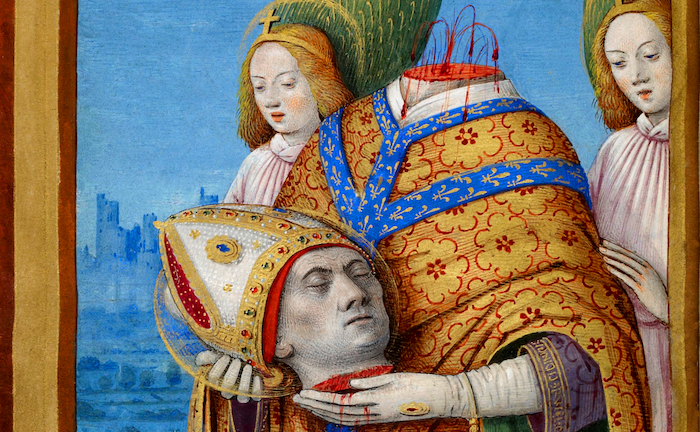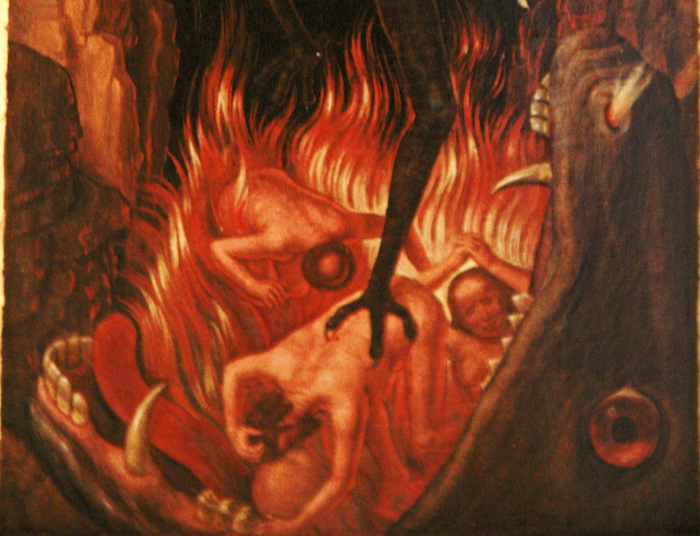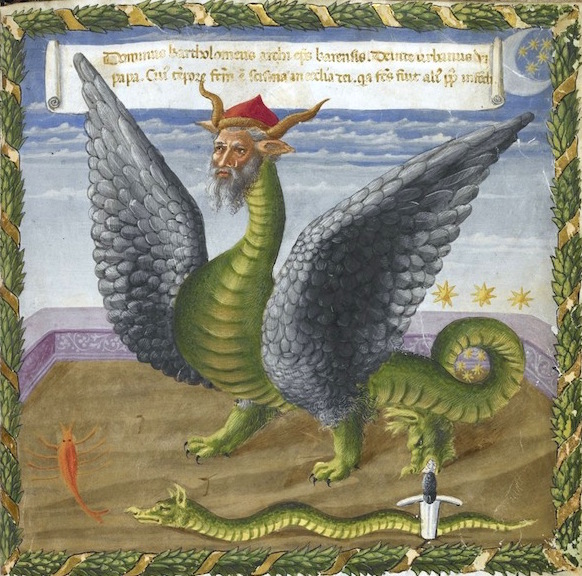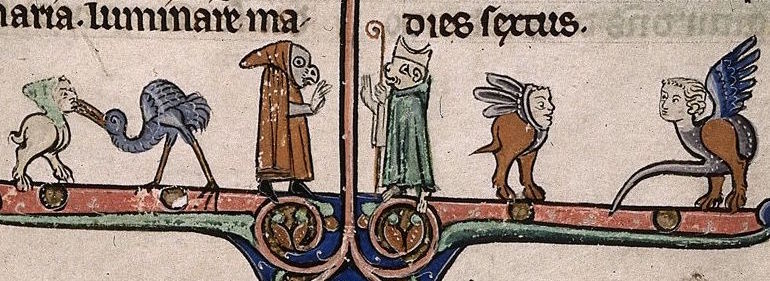Monsters aren’t just for fighting! They’re also for roleplaying with, puzzling out, and adding color to your campaign. With that in mind, here’s four weird monsters from Medieval Europe: one righteous, one villainous, one puzzling, and one silly.

The Good
Cephalophores are saints who were martyred (usually beheaded), but nonetheless kept walking and talking. St. Denis, the patron saint of France, was supposedly beheaded, stood up, picked up his head, and walked several miles while the head in his arms delivered a sermon. Bartholomew the Apostle supposedly kept preaching after being skinned alive and had to be beheaded the next day.
At your table, you might have a cephalophore NPC. Ideally, she might have been headless for several years, but has kept right along ministering to the poor and crusading against unbelievers. Any NPC who’s powerful enough to survive behind beheaded or flayed is, in most RPG settings, powerful enough to restore her body. The fact she can’t be bothered to do so conveys at a glance that she’s not concerned by petty affairs like vanity or pain. Her monstrous appearance almost certainly reflects a greater-than-human psychology.
Your players will probably instantly pick up on this. On meeting her, they’ll probably start exclaiming things like “Oh shit! I bet she…” and start speculating about her motivations and personality. Smile, nod, and write down what they said. It’s now canon. Congratulations on getting your players to grok this fully fleshed-out NPC without any effort – and without them even knowing what happened.

The Bad
We’ve talked briefly about Hellmouths in the post on Medieval mystery plays. The word has come down to us as just meaning ‘portal to Hell’, but they were usually portrayed in Medieval art as being literal mouths. Visions of tormented souls in lakes of fire were framed by the gaping jaws of a horrible beast. Images of the Last Judgement often showed devils forcing the damned into the open mouth of a bestial head that symbolized the entrance to Hell.
It’s great metaphor, but let’s take it literally! What about the beast itself – the enormous monster whose gullet is a gateway to Hell? It’s usually depicted as vaguely feline or lupine, but clearly fantastical. Its mouth is way too big or its jaws open far too wide. The rest of its body is seldom depicted, but we can easily flesh out the monster for use at the table. The body is probably too small for its head. The beast’s proportions are weird, and its joints may bend the wrong direction. In combat, it may be able to breathe Hellfire or regurgitate devils to help it. Its sharp teeth are deadly, and anyone swallowed by the beast is transported straightaway to Hell. Fortunately, its grotesque hindquarters are a vulnerability. All the creature’s potency is contained in the head, so darting in to nip at its heels may be the way to bring this monster down.

The Ugly
An illustrated collection of papal prophecies from 1465 contains a remarkable critter: a dragon with the head of Pope Urban VI and – at the end of its tail and symbolizing Pope Clement VII – a wolf’s head clutching a sword in its jaws. Urban and Clement were rivals. Both claimed to be the real pope, and both had supporters in the Catholic clergy. For the duration of the schism (1387-1417), there were essentially two parallel Catholic hierarchies, each electing its own series of popes. Some saw the schism as a sign of the apocalypse, hence the depiction of Urban and Clement as the dragon mentioned in the apocalyptic Book of Revelation that lassoes the stars with its tail.
At your table, you can introduce this peculiar dragon as the result of a curse. Two people squabbling over an inheritance (Or a kingdom. Or a papacy.) were punished for being unable to resolve their differences. Now, they must live life as a single monster with two heads. Neither head can hurt the other. The only way they know to break the curse is to convince a passerby of the rightness of one head’s cause and to get her to kill the other head.
The beast surprises the PCs by the roadside and each head makes its case. If the PCs kill one of the heads, the the beast splits into two humans, one grateful and one dead. Neither head knows (but the PCs may guess) that if the party can resolve the heads’ dispute, it will also end the curse.

The Silly
The Gryllus is a funny little guy who appears in the margins of illuminated manuscripts. There’s not much to him: a pair of bestial legs topped by a head where his junk should be. His body ends at the waist, and he may have some other animal body parts tacked on. Grylluses often appear in grumpy-looking packs parading around large chunks of text. When you need to break the tension with a comic interlude, have a gryllus pack come parading in. They may lend a hand (not that they have hands) or just hang around and comment. Give them crotchety little voices and ham it up. These dudes are intrinsically ridiculous.



–
Source: Medieval Monsters: Terrors, Aliens, Wonders by Sherry C.M. Lindquist and Asa Simon Mittman






